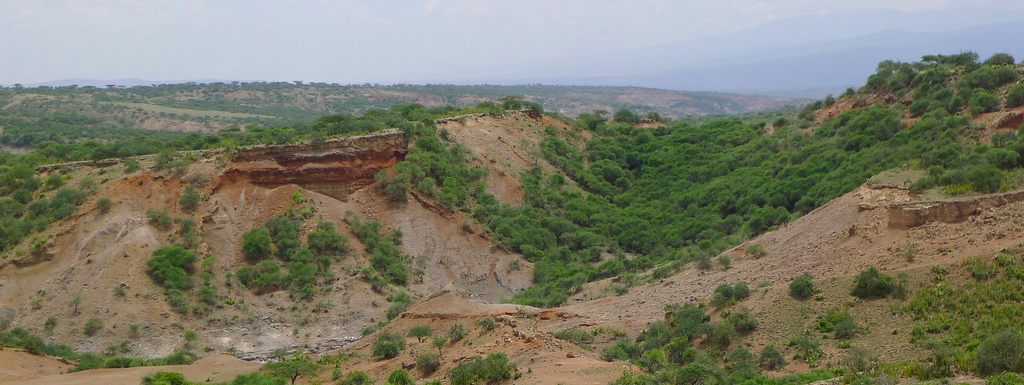The Economist
Image: pablo_marx
How and why, roughly 2m years ago, early human ancestors evolved large brains and began fashioning relatively advanced stone tools, is one of the great mysteries of evolution. Some researchers argue these changes were brought about by the invention of cooking. They point out that our bite weakened around the same time as our larger brains evolved, and that it takes less energy to extract nutrients from cooked food. As a result, once they had mastered the art, early chefs could pare back their digestive systems and invest the resulting energy savings in building larger brains capable of complex thought. There is, however, a problem with the cooking hypothesis. Most archaeologists believe the evidence of controlled fire stretches back no more than 790,000 years.
Roger Summons of the Massachusetts Institute of Technology has a solution. Together with his team of geomicrobiologists, he analysed 1.7m-year-old sandstones that formed in an ancient river at Olduvai Gorge in Tanzania. The region is famous for the large number of human fossils that have been discovered there, alongside an impressive assembly of stone tools. The sandstones themselves have previously yielded some of the world’s earliest sophisticated Acheulean hand axes: large tear-drop-shaped stone tools that are associated with Homo erectus. Creating an Acheulean axe by repeatedly knocking flakes off of a raw stone in order to create two sharp cutting edges requires a significant amount of planning. Their appearance is therefore thought to mark an important moment in cognitive evolution. Read more on The Economist website…








